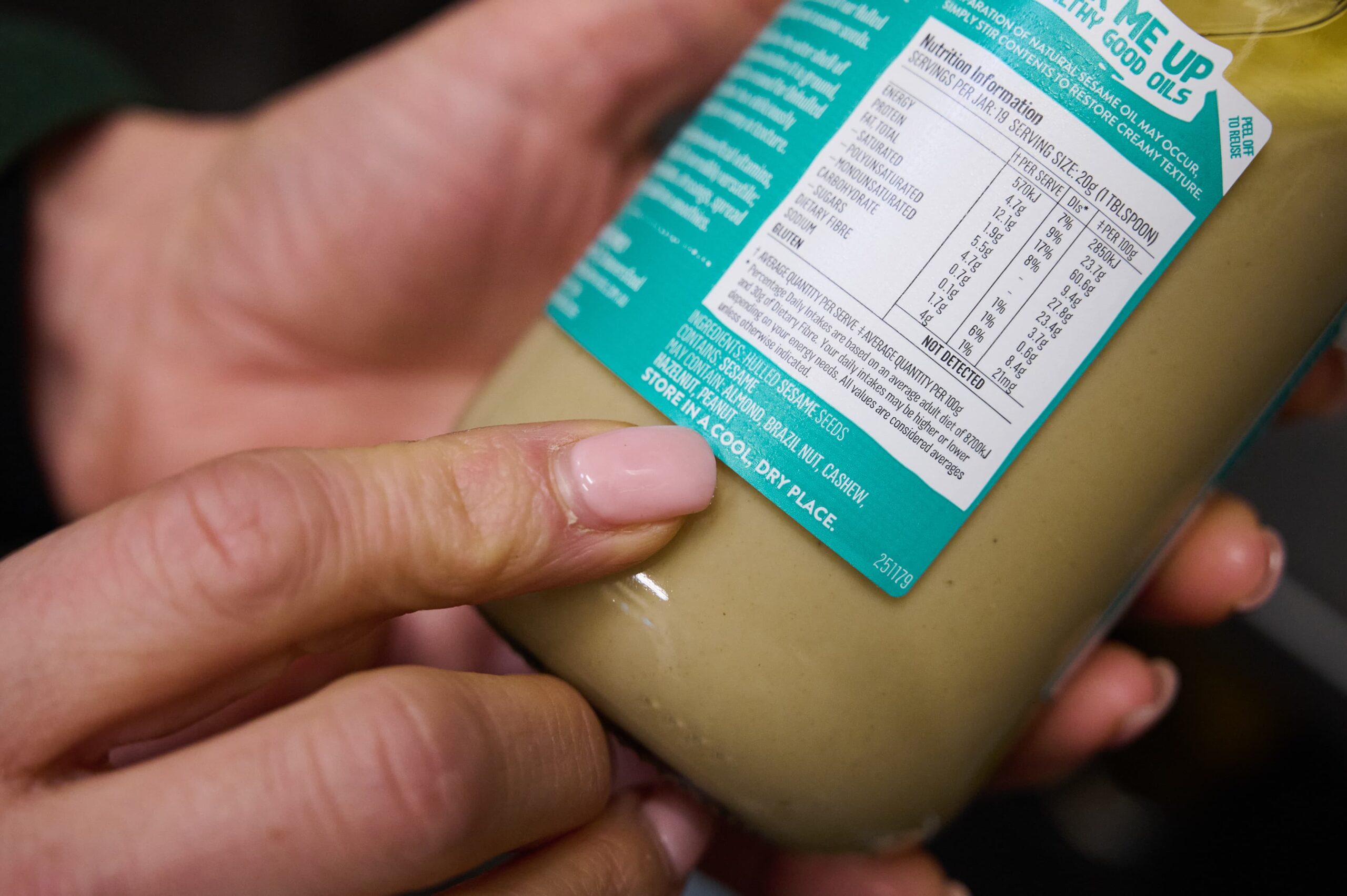
You pick up a new snack on a busy day. The packaging looks friendly and simple at first glance. Then the ingredients list runs like tiny, crowded text. Your eyes search for the words you fear most. A bold contains line catches your attention quickly. Relief follows because the message is clear enough. Confidence grows when you know exactly what to scan.
What counts as an allergen legally?
Most countries define a group of priority allergens. These are foods that cause most severe reactions. Common examples include milk, eggs, peanuts, and tree nuts. Wheat, soy, fish, shellfish, and sesame appear often. Regions can add others based on local data. Rules require clear naming when these appear as ingredients. National food safety authorities publish the current legal lists.
Where do allergens appear on labels?
Allergens can sit in the main ingredients list. They can also appear in a separate contains statement. Some packages use bold text for listed allergens. Others repeat the allergen in parentheses for clarity. You might read, casein (milk), or albumin (egg). These formats help when names feel unfamiliar. Reading both sections protects against small design differences.
How do contains statements work?
A contains statement highlights allergens used intentionally. It summarizes risk without scanning the full paragraph. You might see contains: milk, wheat, soy near ingredients. Brands place this line close to the list usually. It should match the ingredients naming exactly. If it seems inconsistent, treat the higher risk seriously. Ask the manufacturer if doubts remain after reading.
What do precautionary phrases mean?
Some packages include precautionary phrases about cross contact. These include may contain or made on shared equipment. They warn about unplanned trace amounts from production. Wording is not standardized in many places yet. May contain does not always indicate actual contamination. It signals a risk that cannot be ruled out. Your plan should match your sensitivity and clinical advice.
Which names hide common allergens?
Milk can hide behind casein, whey, or lactose in lists. Egg can appear as albumin or ovalbumin sometimes. Soy may show as soy protein or lecithin (soy). Wheat can appear as durum, semolina, or spelt. Tree nuts list by specific names, like almond or walnut. Peanuts keep their name but hide in mixed snacks. Careful reading of synonyms makes decisions faster.
How do countries label ingredients differently?
The United States highlights a group often called the big nine. The European Union requires clear emphasis for several allergens. Gulf countries align broadly with international safety guidance. Some regions add local priorities like certain seeds. Formatting styles can differ across markets and languages. Imported foods may follow the origin country’s rules. Local authorities explain accepted formats for their shelves.
What about additives and E numbers?
Some additives derive from allergenic sources historically. Modern manufacturing often purifies these ingredients extensively. Many become safe for most allergic consumers. Lecithin labeled with soy still deserves attention. E numbers sometimes obscure a familiar name. Packages usually translate numbers into names nearby. If an additive raises doubt, choose a safer alternative.
How should you read when rushed?
Build a fast scanning order for every product. Start with the contains line if present on the package. Scan the bolded words in the full list next. Search for known synonyms you track personally. Check for any precautionary cross contact phrase quickly. Do a final glance at flavor descriptions near the front. Practice turns quick checks into confident decisions.
How to handle bakery and deli items?
Fresh counters often print limited ingredient details. Staff may rotate and miss minor information sometimes. Ask about recipes and shared equipment politely and clearly. Request packaging with a printed label when possible. Avoid items sliced near your high risk allergens. Steer toward sealed packages when uncertainty remains. Your safety plan should never feel impolite or excessive.
How does gluten differ from wheat?
Gluten is a protein group present in several grains. Wheat contains gluten but is not the only source. Barley and rye also contain related proteins. Some people avoid wheat specifically for allergy. Others must avoid all gluten for medical reasons. Labels vary in how they present these distinctions. Ask your clinician which restriction fits your condition.
Where do oils and lecithins fit?
Refined oils are often highly purified from proteins. Many guidelines consider refined peanut oil low risk. Cold pressed oils carry more residual proteins sometimes. Soy lecithin appears in many candies and baked goods. Its protein content is usually very low in practice. Sensitive individuals still choose to avoid it often. Personal thresholds matter more than broad generalizations here.
How does cross contact happen in factories?
Factories move huge volumes through shared spaces. A line may process nuts in the morning. It might switch to seeds later that afternoon. Cleaning reduces residue but cannot erase uncertainty entirely. Tiny amounts can remain on surfaces or belts. Precautionary statements reflect this practical reality. Consistent reading keeps these edge cases visible.
What about restaurant menus and delivery?
Menus are not legal labels in many places. Recipes can change without printed updates during weeks. Shared fryers turn safe items into risky items quickly. Delivery apps shorten details for space and speed. Call the restaurant during quiet hours for clarity. Ask about ingredients and equipment directly and calmly. Confirm with the kitchen for severe allergies every time.
How can kids learn safe reading?
Teach children to find the contains line first. Show them where bold text usually appears on lists. Practice with empty packages at the kitchen table. Build a small glossary of your family’s synonyms. Add a simple game to spot safe and unsafe items. Celebrate when they catch a tricky word correctly. Confidence grows when children feel part of safety routines.
How do apps and scanners help?
Apps can speed checks by scanning barcodes. Databases vary in completeness across countries. Updates may lag behind recipe changes occasionally. Treat apps as a support rather than final truth. Cross check with the printed label before deciding. Save confirmed products in a personal list for speed. Your list becomes a trusted pantry map over time.
What role do lot codes and recalls play?
Recalls happen when safety checks find problems. Lot codes identify exact batches on the shelf. Keeping a photo of packages helps track numbers. Stores and authorities announce recall details publicly. Check your pantry when a recall appears in news. Replace items calmly and document purchases if needed. These habits turn surprises into quick, simple tasks.
How do storage labels at home help?
Decanting can hide original information behind containers. Cut and tape the ingredient panel to jars. Write the contains line on the container front. Add open dates to watch freshness and quality. Keep allergy friendly shelves separate from family bulk bins. Label snacks for school or trips the night before. Clear home labels reduce frantic morning searches.
How should travelers manage airport shopping?
Airports carry many imported and novelty foods. Labels may appear in languages you do not read. Look for international allergen words you recognize. Choose sealed items with short ingredient lists. Avoid bulk bins and self serve pastry stations. Pack a small safe snack kit from home. Travel feels lighter when basics are guaranteed.
According to our editor’s research, what helps most?
According to our editor’s research, three habits stand out. Families who standardize a scan order make fewer mistakes. Shoppers who keep a synonyms card read faster. People who photograph labels build a low stress archive. Weekly pantry reviews reduce last minute uncertainty significantly. These patterns appear across many households consistently. Simple structure protects attention during busy weeks.
As a result of our editor’s reviews, what works in stores?
As a result of our editor’s reviews, store routines matter. Choose bright aisles and quieter hours for reading. Place suspect items in a separate basket corner. Recheck labels before checkout in the same order. Keep a short questions list for customer service. Walk back items that remain uncertain without guilt. Calm shopping leads to better home routines later.
Where do schools and workplaces fit?
Shared spaces add layers of practical coordination. Ask for clear labeling on shared snacks and events. Suggest sealed options with printed ingredient panels. Propose a simple policy for precautionary statements. Offer examples that worked in previous settings. Thank organizers for efforts and follow up kindly. Good relationships make safer choices easier for everyone.
Why do seasonal products need extra attention?
Limited editions sometimes use different suppliers. Recipes may change for a short campaign. Packaging designs can distract from label details. Allergen statements can move to new locations. Scan every seasonal product as a new item. Do not assume a familiar brand remains identical. Fresh eyes prevent seasonal surprises in crowded aisles.
How should you handle multi language labels?
Look for bold text and punctuation that repeats. Match words by pattern and placement across languages. Focus on scientific names inside parentheses when present. Use your synonyms card for likely translations. If doubt remains, choose a safer alternative calmly. Contact brands for clarifications when time allows. Keep your final choice aligned with your risk tolerance.
What about vitamins, supplements, and powders?
Supplements follow different labeling rules in some regions. Flavorings and stabilizers can include allergens sometimes. Check for contains or precautionary language carefully. Ask pharmacists about recent recipe updates if unsure. Prefer established products with stable compositions. Keep a record of tolerated brands for future purchases. Treat powders like foods rather than harmless extras.
How do you talk with manufacturers effectively?
Prepare exact questions before calling customer care lines. Ask about specific ingredients and shared equipment. Request details for the product code and batch. Record the date and summary of the exchange. Recheck if the recipe changes in later months. Many companies answer allergy questions respectfully and fast. Clear questions receive clear answers more reliably.
Which symptoms require urgent action?
Hives, swelling, or trouble breathing are emergencies. Dizziness or vomiting with breathing changes is serious. Follow your emergency plan without hesitation. Use prescribed medication exactly as instructed. Seek medical care after first aid actions immediately. Review the label again for learning when safe. Adjust future plans based on the new information.
How does cooking at home reduce risk?
Home kitchens allow precise ingredient choices daily. Simple recipes use fewer packaged components safely. Fresh foods reduce label reading burdens significantly. Sealed spices and oils reduce cross contact risks. Family members can learn your procedures easily. Clean surfaces and separate tools keep routines reliable. Home builds confidence for social meals and travel.
